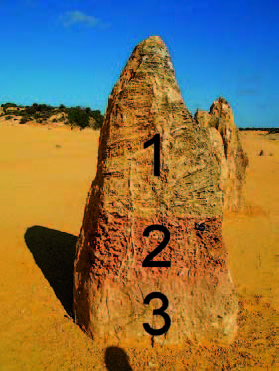Pinnacle Syngenetic Karst in Nambung National Park, Western Australia
DOI:
https://doi.org/10.3986/ac.v38i1.134Abstract
Simultaneous karstification and lithification of aeolian calcarenite in the southwest coastal part of Western Australia produced syngenetic karstic geomorphological features, such as solution pipes, maze caves, collapsed dolines and pinnacles. The formation of these geomorphological features was greatly influenced by the poor cementation and matrix porosity of the calcarenite. Pinnacles, calcarenite pillars up to 5 metres tall with one or more peaks and various types of sediment layers, are most numerous and densest in an area called the Pinnacles in Nambung National Park, Western Australia. $eir detailed characteristics and origin are still partially unknown and controversial. Theories suggest that the pinnacles are the final product of one or more of corrosive expansion and coalescence of solution pipes, cemented sediment surrounding the roots, cemented fill of solution pipes, products of focused cementation or remainders of tree-trunks. This article presents descriptions of pinnacles in Nambung National Park based on my fieldwork and suggests a polygenetic origin for the pinnacles, with roots playing a major role. The genesis of pinnacles is far more complex than the theories presented so far.
Downloads

Downloads
Published
How to Cite
Issue
Section
License
Authors guarantee that the work is their own original creation and does not infringe any statutory or common-law copyright or any proprietary right of any third party. In case of claims by third parties, authors commit their self to defend the interests of the publisher, and shall cover any potential costs.
More in: Submission chapter




